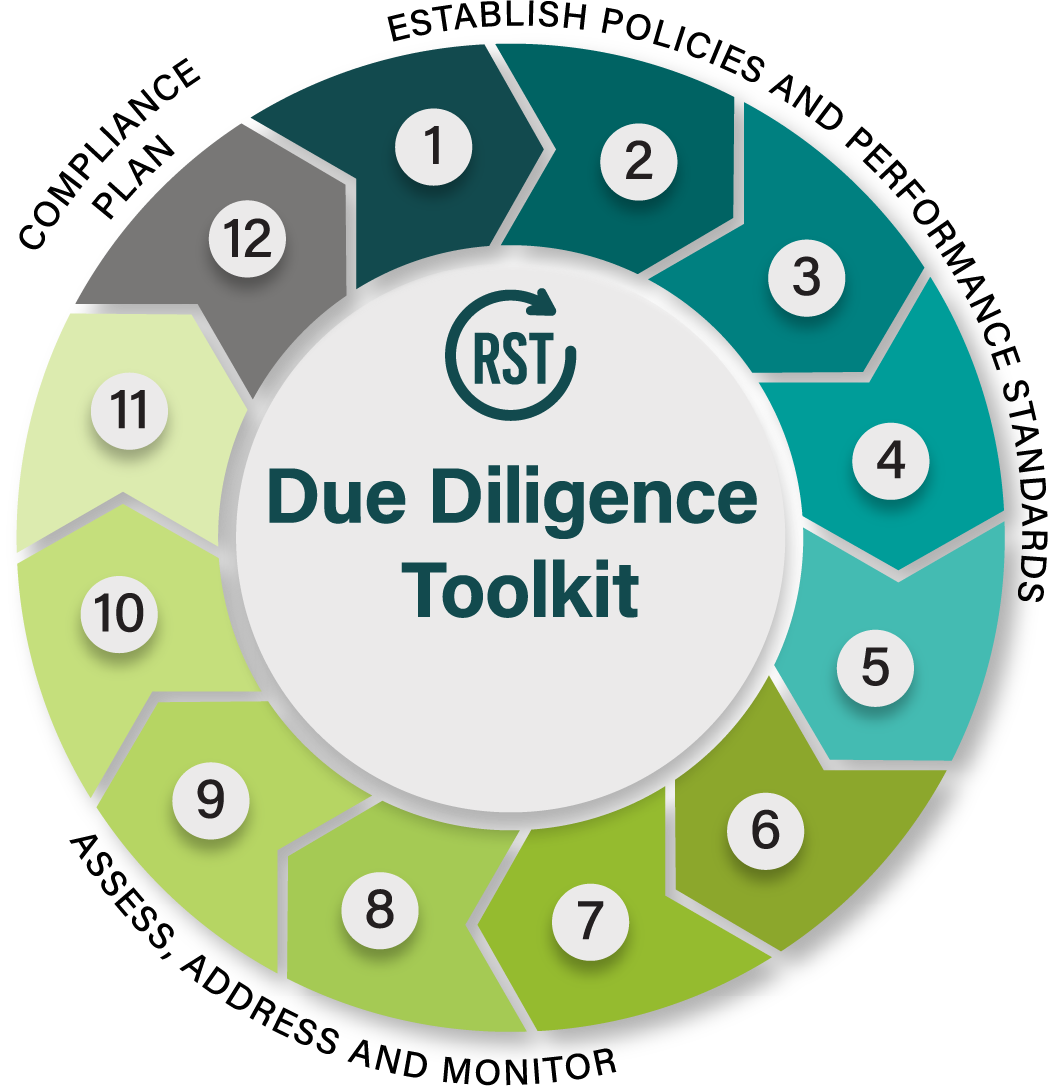Facilities Services
Sector Toolset
Prevent and Address Forced Labor in Your Company’s Supply Chains 

Introduction & Framing
Facilities services includes janitorial, laundry, grounds maintenance, guarding/security, and waste management. The workers in this sector are contracted by third-party service providers who often do not provide the level of human rights protections that are offered to direct employees of the companies where these workers are actually performing the work. Low-skilled and often migrants, facilities services workers face exploitive employment terms and conditions, indebtedness to labor recruiters or employers, and barriers to social and legal support. They are generally not considered the responsibility of the companies whose sites they clean, guard, or maintain, and they have no means of filing grievances or concerns about their working conditions.
Tool 1: Supply Chain Due Diligence Process
[View Tool 1]This sample facilities services supply chain assurance program includes these vital steps: utilizing processes to identify human trafficking risks, addressing identified issues, implementing sustainable solutions, and monitoring supplier performance consistently over time.
Tool 2: Code of Conduct
[View Tool 2]Ideal Codes of Conduct will establish and enforce high-level performance expectations for suppliers and labor agents in order to prohibit human trafficking and protect workers.
Tool 3: Performance Benchmarks
[View Tool 3]Benchmarks can be used to evaluate the labor and human rights performance of suppliers and labor agents.
Tool 4: Country-Level Review of Legal Protections Against Human Trafficking
[View Tool 4]This tool offers guiding questions for conducting review of country laws relevant to the prevention of human trafficking.
Tool 5: Supplier Agreement
[View Tool 5]This sample Supplier Agreement details a formal commitment of a supplier or agent to conform to a customer’s Code of Conduct and applicable legal requirements.
Tool 6: Supply Chain Mapping and Risk Assessment
[View Tool 6]Supply chain mapping allows a company to identify the footprint of their operations. This tool provides guidance for mapping facilities services and labor supply chains, and how to assess the level of risk.
Tool 7: Criteria for Screening
[View Tool 7]This tool lays out criteria for screening individual labor agents based on their ability to comply with all applicable legal requirements and Code of Conduct standards for ethical recruitment.
Tool 8: Supplier Self-Assessment
[View Tool 8]This sample questionnaire provides companies with preliminary insight into potential human trafficking risks in how a supplier recruits workers and how it manages its labor agents.
Tool 9: Monitoring Labor Agent Performance
[View Tool 9]Once a labor agent is engaged, their performance must be monitored for ongoing compliance. This tool contains a set of criteria used for monitoring labor agents in supply chains.
Tool 10: Conducting Worker Interviews
[View Tool 10]This tool is a guide to interviewing vulnerable worker populations to improve auditors’ ability to identify human trafficking indicators or red flags.
Tool 11: Worker Engagement
[View Tool 11]This tool describes various models for workplace engagement, covering workplace communication, worker organization, and effective grievance mechanisms.
Tool 12: FAR Compliance Plan
[View Tool 12]This tool is specifically intended for use by companies that need to demonstrate compliance with the requirements of the Federal Acquisition Regulation (FAR): Combating Trafficking in Persons and submit certification 52.222-56 set forward by 52.222-50(h) and 22.1703(c).
Facilities Services Toolset
Establish Policies and Performance Standards
Assess, Address and Monitor
Compliance Plan
Dive deeper into forced labor case studies, compliance, and more in our Resource Library.
